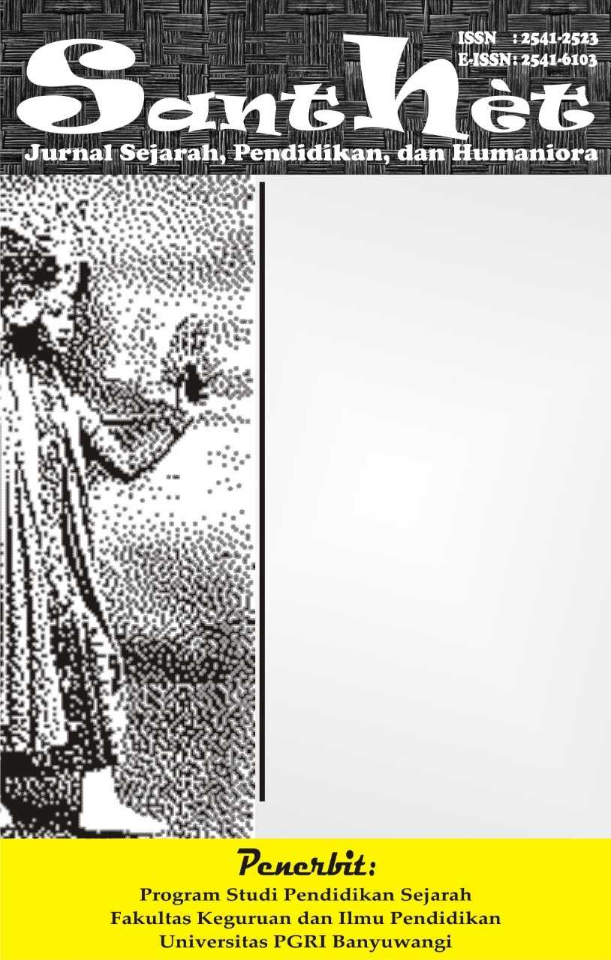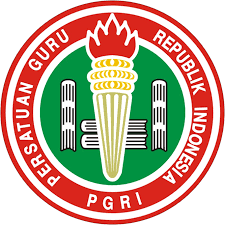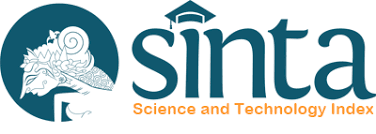Implementasi Pembelajaran Sejarah Berbasis Sumber Ajar Batik Tangerang (Studi Kasus: SMAN 3 Kabupaten Tangerang)
DOI:
https://doi.org/10.36526/santhet.v7i2.2644Keywords:
History Learning, Batik, Local HistoryAbstract
The culture of the people of Tangerang Regency, starting from hat crafts to Tangerang batik crafts, is one part of local wisdom. To preserve it so that it doesn't become extinct or disappear, it is necessary to carry out an activity in the preservation and introduction of various Tangerang batik motifs to the public, especially students who are in Tangerang Regency. Thus, the problem of maintaining local wisdom values in the typical Tangerang batik motifs is an important matter for Tangerang Regency. Therefore, in introducing various Tangerang batik motifs, it is necessary to introduce them to schools. So, that schools in Tangerang Regency care about preserving their local wisdom. The research method used is a qualitative method, while the data collection techniques used are observation, interview, and documentation. The research results are (1) there is a need for an introduction to local history based on the local wisdom values of Tangerang batik, because it will add local insight to students at SMAN 3 Kabupaten Tangerang; (2) the implementation of history learning on Tangerang batik craft material motivates students, because it is taught by history teachers who have prepared the learning process, both from lesson plans, materials, methods, and media specifically; and (3) the obstacles found in learning, namely the availability of material that is not widely available in the school library and the time allocation that is not sufficient to discuss broader material in learning local history.
References
Asmani, J. M. (2012). Pendidikan berbasis keunggulan lokal. Diva Press.
Bogdan, R., & Biklen, S. K. (1997). Qualitative Research for Education. Allyn & Bacon Boston, MA.
Darmawan, W. (2012). Sejarah Lokal: (Pengertian, Konten, dan Pengajaran). http://file.upi.edu/Direktori/FPIPS/JUR._PEND._SEJARAH/197101011999031-WAWAN_DARMAWAN/Peng_sej_Lokal.pdf
Hasan, S. H. (2012). Pendidikan Sejarah Indonesia: Isu dalam ide dan pembelajaran. Rizqi Press.
Kosasih, E. (2014). Strategi belajar dan pembelajaran implementasi kurikulum 2013. Yrama Widya.
Kusnoto, Y., & Minandar, F. (2017). Pembelajaran Sejarah Lokal: Pemahaman Kontens Bagi Mahasiswa. Sosial Horizon: Jurnal Pendidikan Sosial, 4(1), 125–137.
Mudlofir, A., & Rusydiyah, E. F. (2016). Desain Pembelajaran Inovatif dari teori ke praktik. Raja Grafindo Persada.
Mulyana, A., & Darmiasti. (2009). Historiografi di Indonesia: dari magis-religius hingga strukturis. Refika Aditama.
Permana, R. (2020). Pembelajaran Sejarah Lokal di Sekolah. Media Edukasi Indonesia.
Riyanto, W. P., & Ja’fat, M. A. (1997). Katalog Batik Indonesia. Balai Besar Penelitian dan Pengembangan Industri Kerajinan dan Batik, Proyek Pengembangan dan Pelayanan Teknologi Industri Kerajinan dan Batik.
Sani, R. A. (2022). Inovasi pembelajaran. Bumi Aksara.
Sanjaya, W. (2006). Pembelajaran dalam implementasi kurikulum berbasis kompetensi. Kencana.
Sardiman. (2012). Pembelajaran Sejarah dan Pembangunan Karakter Bangsa. In Refleksi Perjalanan Karir Akademik Prof. Dr. H. Said Hamid Hasan, MA. Bee Media Indonesia.
Slameto. (2015). Belajar dan Faktor-Faktor Yang Mempengaruhinya. Rineka Cipta.
Sugiyono. (2017). Metode Penelitian Kualitatif. Gramedia.
Suhartono, W. P. (2010). Teori dan Metodologi Sejarah. Graha Ilmu.
Suparno, P. (1997). Filsafat konstruktivisme dalam pendidikan. Kanisius.
Supriatna, E. (2012). Transformasi pembelajaran sejarah berbasis religi dan budaya untuk menumbuhkan karakter siswa. ATIKAN, 2(1).
Supriatna, N. (2007). Konstruksi pembelajaran sejarah kritis. Historia Utama Press.
Wiriaatmadja, R. (2015). Buku Ajar Filsafat Ilmu: Relevansinya dengan Pendidikan IPS. Rizqi Press.





























